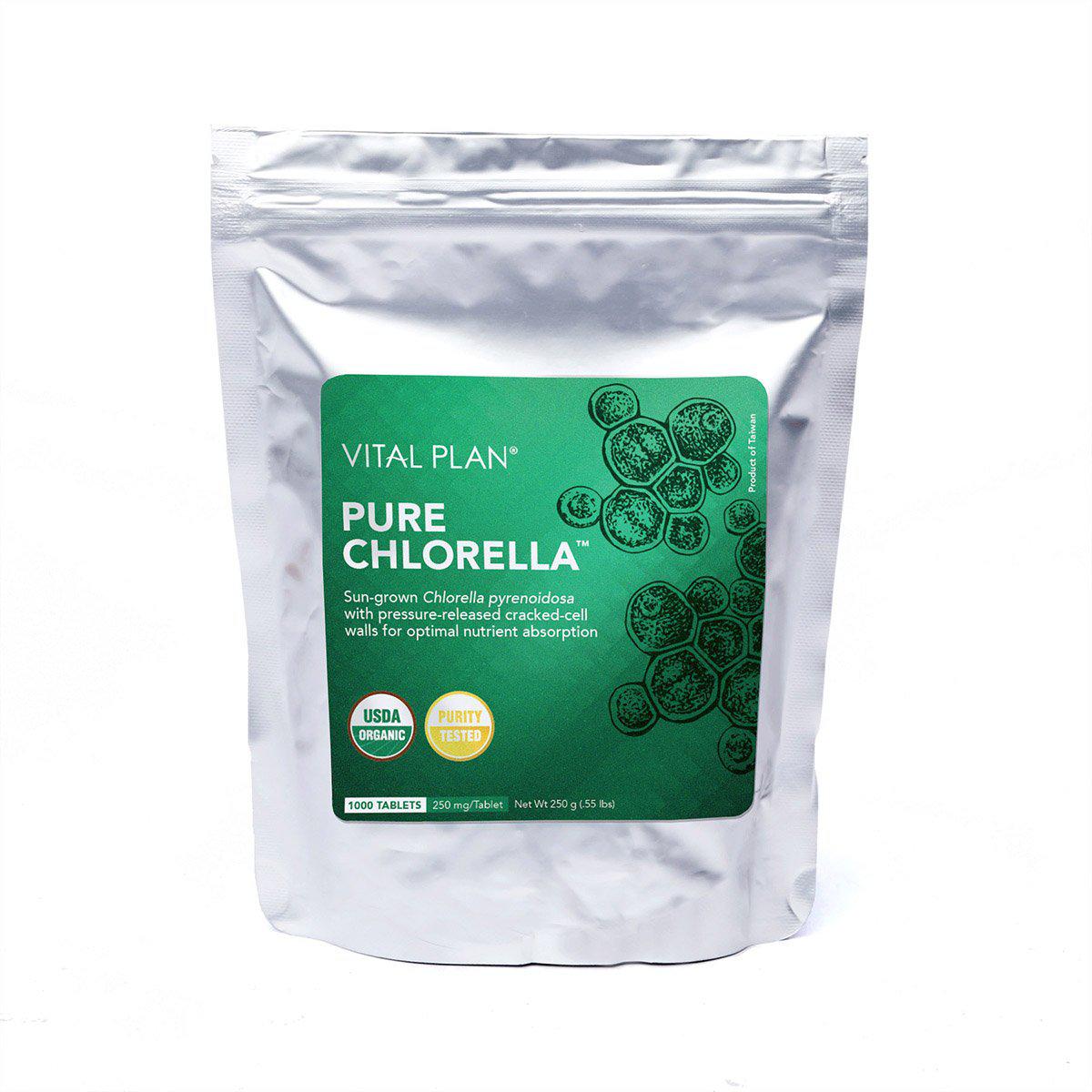

RyanJLane / E+ / Getty Images
Toxins enter the body through what we eat, drink, breathe in, and process in any way. Once inside, toxins overtax our immune system and detoxification system and leave us more vulnerable to illness — not ideal during cold and flu season, and especially not this year during a pandemic — and make us age a little faster, too.
Fortunately, there are a lot of simple things you can do from the comfort of your own home to keep toxins out of your body, flush them out of your system faster, and boost your immunity all at the same time, says Dr. Bill Rawls, Medical Director of Vital Plan. He shares his top 10 strategies below.
1. Source Your Food Wisely
Try to stay away from packaged and processed foods that contain ingredients you can’t pronounce, and instead reach for fresh food from natural sources. Aim to make vegetables more than 50% of your daily diet — their fiber is a great natural binder, and they’re full of beneficial phytochemicals — and minimize your red meat consumption.
Also, whenever practical, choose organic over conventional products. That said, we know organic prices and accessibility can be an issue, so for help making strategic decisions, refer to the Environmental Working Group (EWG) “Dirty Dozen” and “Clean Fifteen” lists:
The Dirty Dozen:
- Strawberries
- Spinach
- Kale
- Nectarines
- Apples
- Grapes
- Peaches
- Cherries
- Pears
- Tomatoes
- Celery
- Potatoes
- Raisins*
(*While raisins aren’t technically a fresh food, the EWG found that they are “one of the dirtiest produce commodities on the market — and even some organic raisins are contaminated.”)
The Clean Fifteen
- Avocado
- Sweet corn
- Pineapple
- Onion
- Papaya
- Frozen sweet peas
- Eggplant
- Asparagus
- Cauliflower
- Cantaloupe
- Broccoli
- Mushrooms
- Cabbage
- Honeydew
- Kiwi
2. Consider Detoxifying and Immune-Boosting Herbs
There are a number of herbs and natural ingredients that can help support detoxification and immune health. Here are the ones at the top of Dr. Rawls’ list:
Chlorella: This nutrient-rich freshwater algae binds to toxins so they can be eliminated from your body more efficiently. Chlorella works particularly well for withdrawing heavy metals. Pure chlorella can be purchased in the form of bulk powder, tablets, or capsules.
Milk Thistle: It’s been used for thousands of years to support a healthy liver, the primary organ responsible for detoxification.
Dandelion: Known to help support liver function, research suggests dandelion helps promote the body’s natural detoxification and elimination processes.
Bitters: Bitter flavors are important to digestion — they stimulate the release of the saliva, enzymes, and bile that help break down your food. Include bitter herbs and foods in each meal, or take a botanical extract that blends bitter herbs like dandelion root, burdock root, orange peel, and gentian root
Reishi mushroom: An extensively studied adaptogenic mushroom, reishi has exceptional immunomodulating and antiviral properties. It helps normalize inflammatory cytokines and promotes healthy immune response against threatening microbes.
Rhodiola: Another adaptogen, rhodiola improves stress tolerance by reducing fatigue, supporting energy levels, and improving tissue oxygenation.
Turmeric: This popular spice is well loved for its anti-inflammatory and antioxidant properties.
Shilajit: An herbo-mineral adaptogen, shilajit has a long history of use in traditional Indian medicine for longevity and strength. It’s also an immunomodulator with antioxidant, anti-inflammatory, and antiviral properties.
Gotu Kola: Best known for improving memory and mood, gotu kola is also great for promoting a normal response to inflammation, balancing stress hormones, and supporting circulation.
Shop Vital Plan Pure Chlorella

Vital Plan is a certified B Corporation — one of only eight supplement companies recognized for achieving the highest standards of social and environmental performance, accountability, and transparency. If you make a purchase using the link above, EcoWatch may earn a commission.
3. Filter Your Water
Much of America’s tap water has been shown to contain pollutants, so filtering what comes out of your kitchen sink is smart. To be sure you’re using a filter that does the trick, keep these guidelines in mind:
- Look for a filter certified by NSF International or the Water Quality Association.
- Choose one that removes the contaminants in your water (check your local drinking water quality report to see what’s present).
- Change your water filters on time.
4. Choose Safe and Effective Cleaning Supplies
When buying household cleaning products, don’t bring home chemicals that could harm your health more than some of the microbes you’re trying to get rid of. Fortunately, there are a number of products on the market that work safely; here are some ways to shop wisely:
- Look for the Green Seal, Ecologo, or Safer Choice (EPA) seals.
- Opt for fragrance-free options.
- Avoid triclosan and quaternary ammonium compounds or “quats.” (One tactic is to choose products that don’t advertise as “antibacterial.”)
- Consult the EWG’s list of safe and effective products for guarding against coronavirus.
5. Opt for Non-Toxic Beauty and Personal Care Products
There are a lot of claims made on beauty and self-care products these days, but words alone, like “natural,” “organic,” “non-toxic,” “clean,” “green,” and “eco-friendly,” don’t mean a thing — they aren’t backed by any sort of regulatory or certification processes. Instead, to find non-toxic products you trust, you have to do a little research.
Start by checking reputable ratings databases like Skin Deep (EWG) and Think Dirty. Another good bet: Look for reliable third-party certifications on products labels, including:
- USDA Organic
- EWG Verified
- Made Safe
- NSF/ANSI 305
- Natural Products Association Certified
- Whole Foods Market Premium Body Care
6. Get Outside
One more reason to get outdoors beyond combatting cabin fever: The air in natural environments is generally much cleaner than indoor air. For one, outdoor air contains ⅔ less carbon dioxide, high levels of which negatively affect our productivity, sleep, and more.
Forest air in particular contains phytoncides, organic compounds emitted by trees and plants that have been shown to boost our immune system function, plus plants in general help neutralize toxic substances in the air. Forests, open spaces, and open water are also rich in negative ions, which reduce inflammation.
So take your pick of natural environs, and get out there as often as possible — while still maintaining at least 6 feet of distance between yourself and others, of course.
7. Bring Nature Indoors
Plants are natural air purifiers, so bringing some plants indoors can help clear the air in your home. Here’s a list of the top 10 air-purifying plants to consider:
- Areca palm
- Lady palm
- Bamboo palm
- Rubber plant
- Dracaena
- English ivy
- Dwarf date palm
- Ficus
- Boston fern
- Peace lily
8. Drive Less, Move More
Staying off the roads decreases air pollution, and the fact that many of us are driving less these days is noticeably improving air quality. If your commute is on hold, try to translate some of your usual travel time into getting more physical activity, or sneak in more movement between other normal routines.
Exercise improves circulation, oxygenates your tissues, and enhances the work of the lymphatic system through muscle contractions — all of which make it easier to move toxins out of your body.
9. Practice Forgiveness
Through the practice of gratitude, we stay centered and in the present moment. This allows us to move through situations from our heart. Take time to forgive someone or yourself for things in the past. When we forgive, we expand and open up to endless possibilities.
10. Quit a Bad Habit
Are you a smoker? Pack rat? Chronically sleep-deprived? In a bad relationship? Toxins come into our lives in many forms. Consider if you’re participating in any unhealthy patterns or holding onto anything that no longer serves you, and then find a way to limit those things in your life.
Dr. Rawls is a licensed medical doctor in North Carolina and a leading expert in integrative health. He has extensive training in alternative therapies, and is the Medical Director of Vital Plan, a holistic health and herbal supplement company in Raleigh, NC.
Reposted with permission from Vital Plan.
- 15 Supplements to Boost Your Immune System Right Now - EcoWatch
- The Immune System's Fight Against the Coronavirus - EcoWatch

 233k
233k  41k
41k  Subscribe
Subscribe 